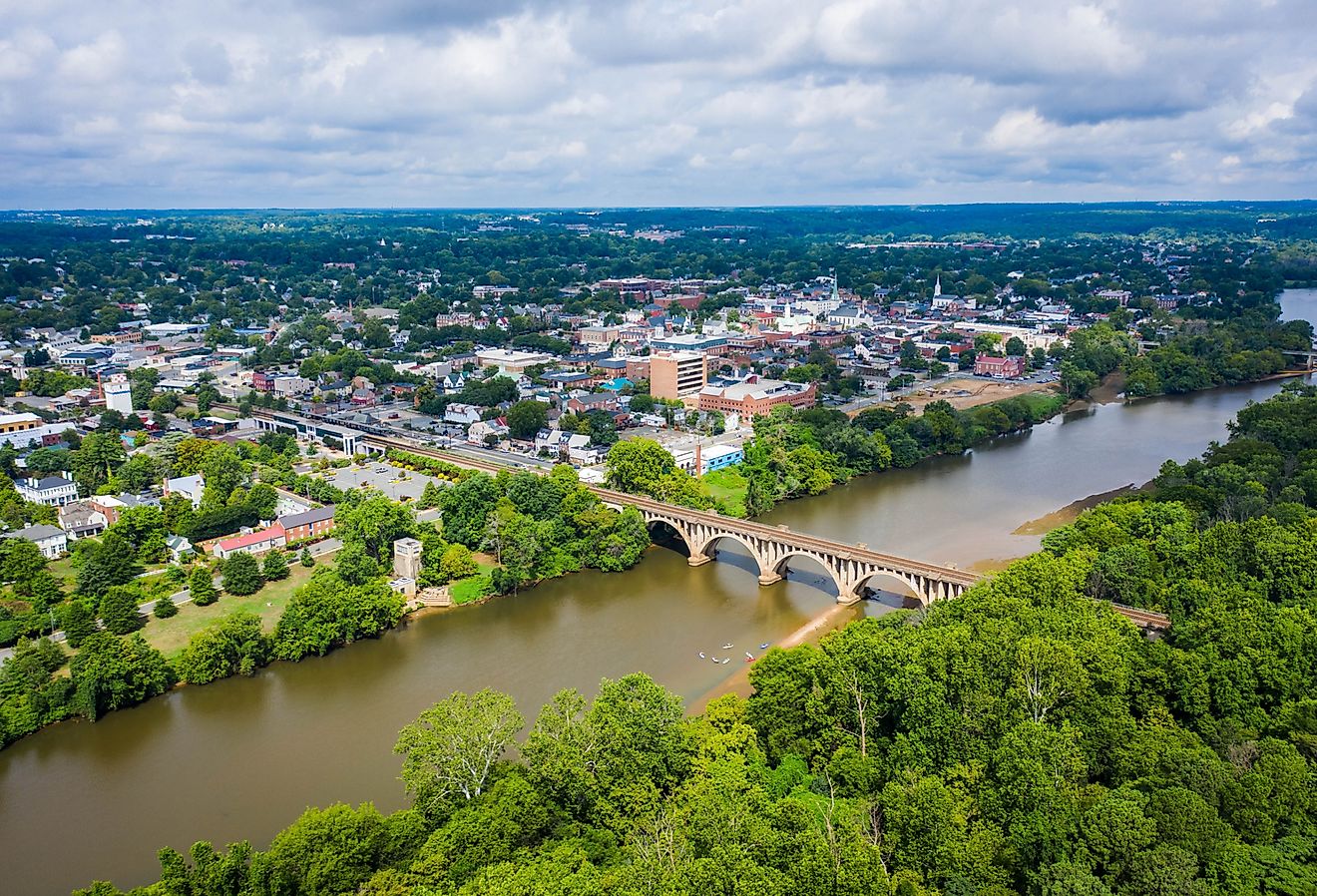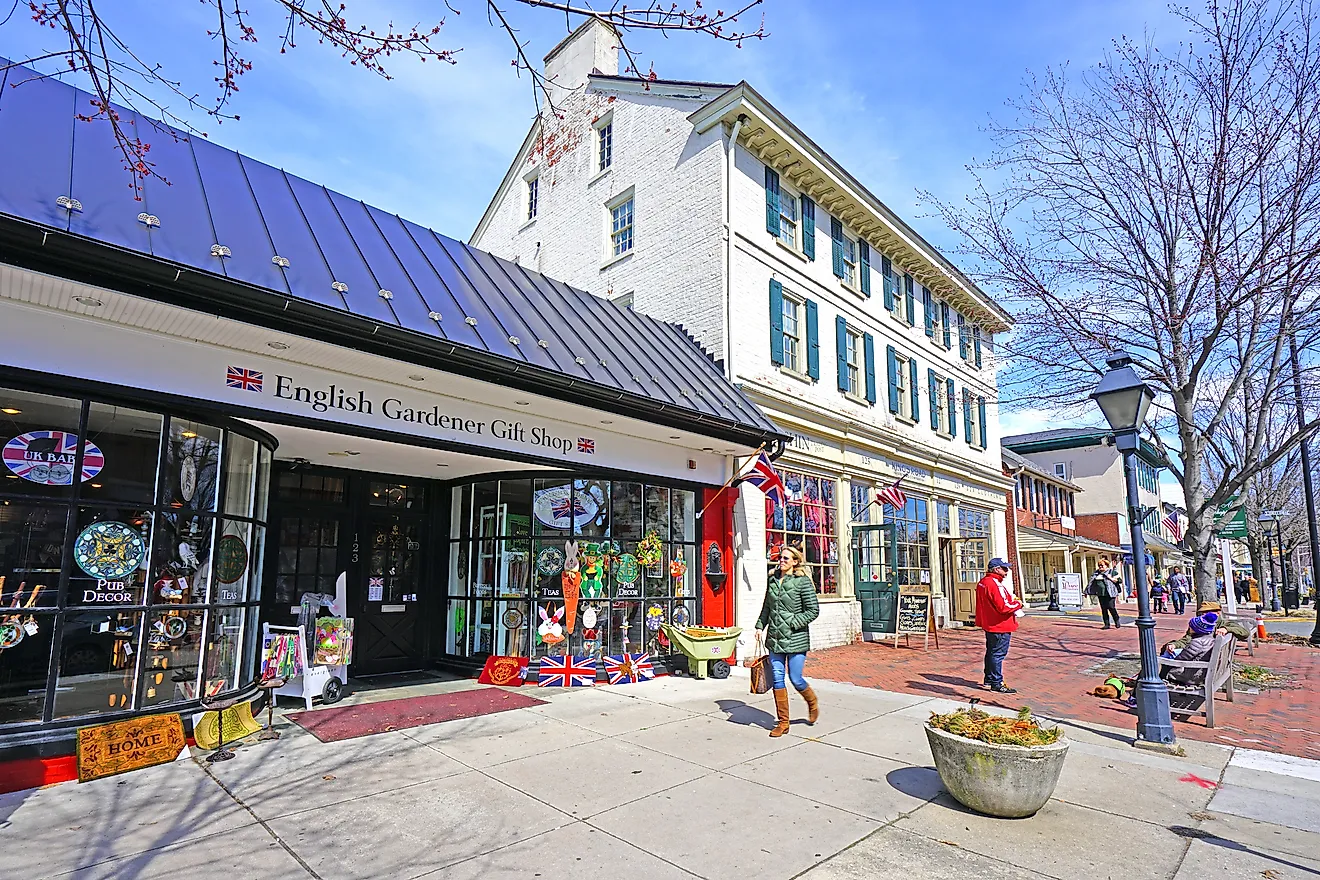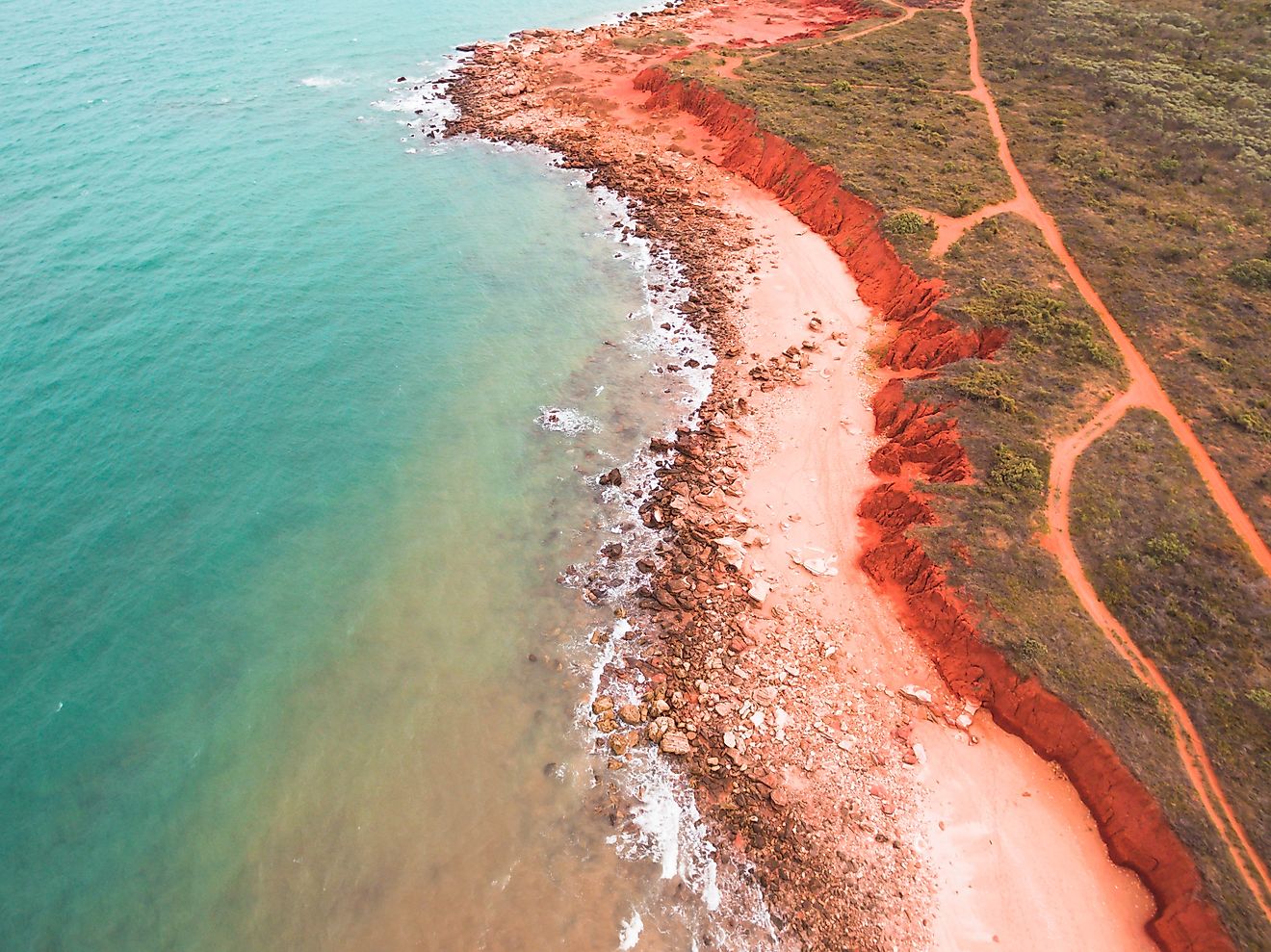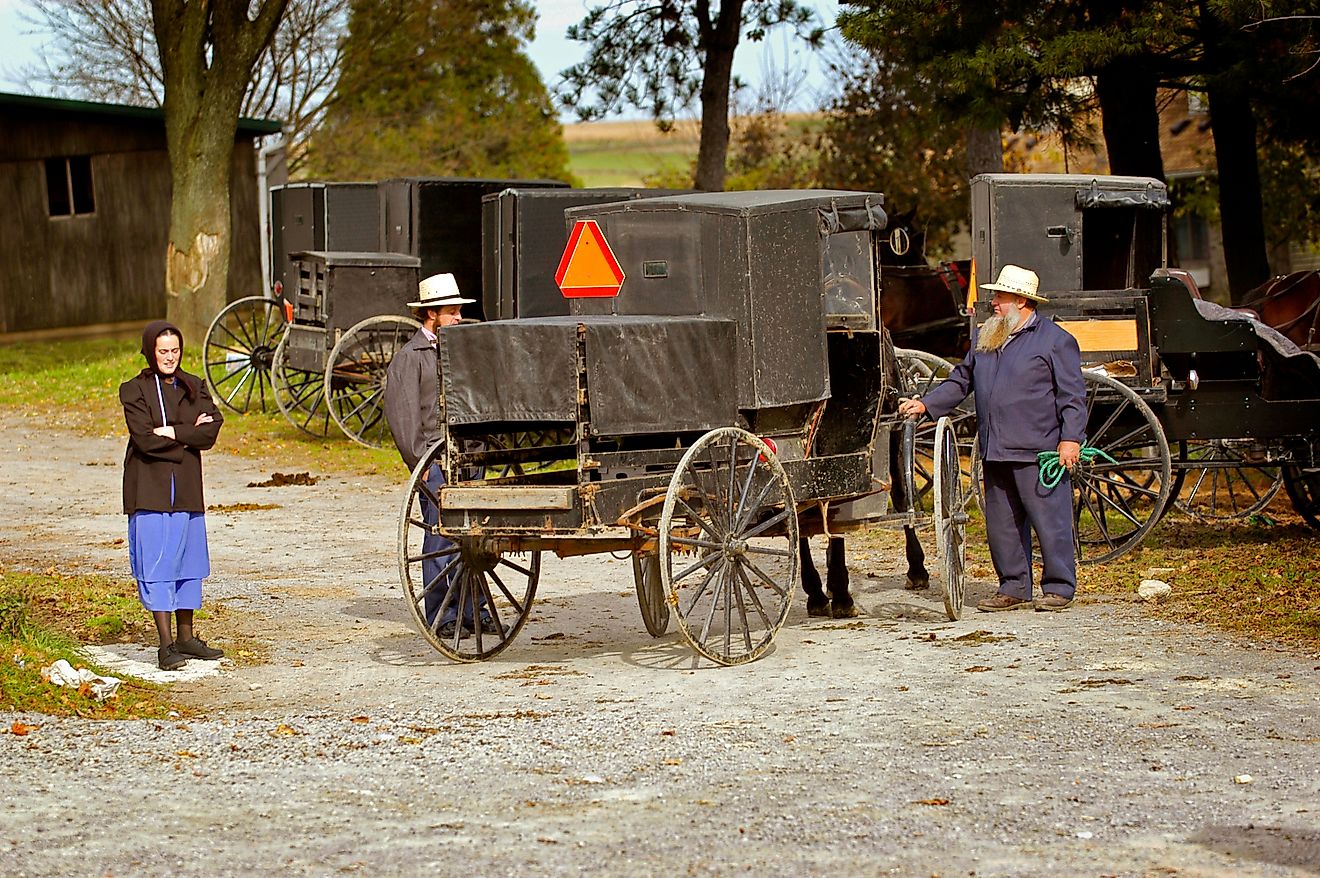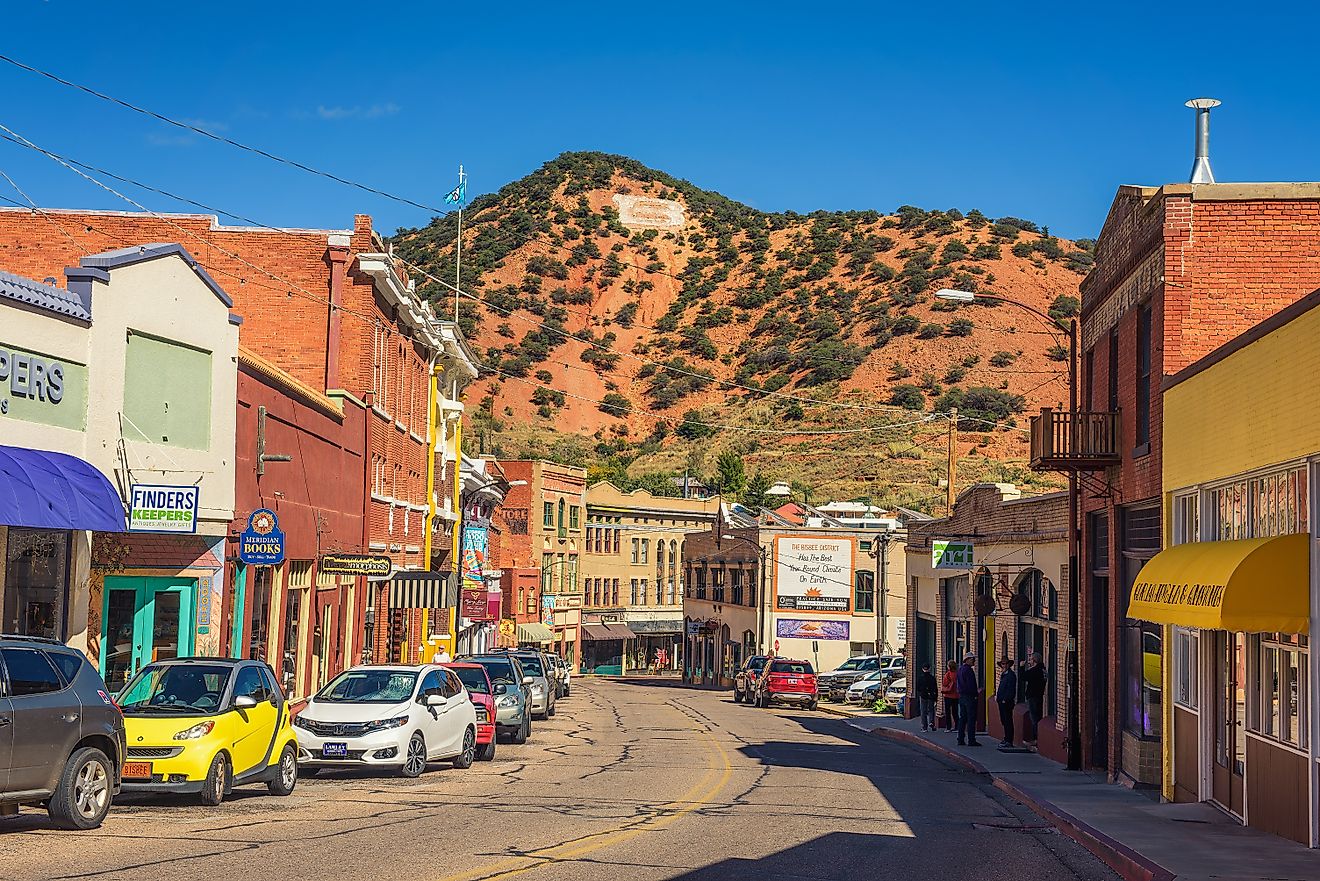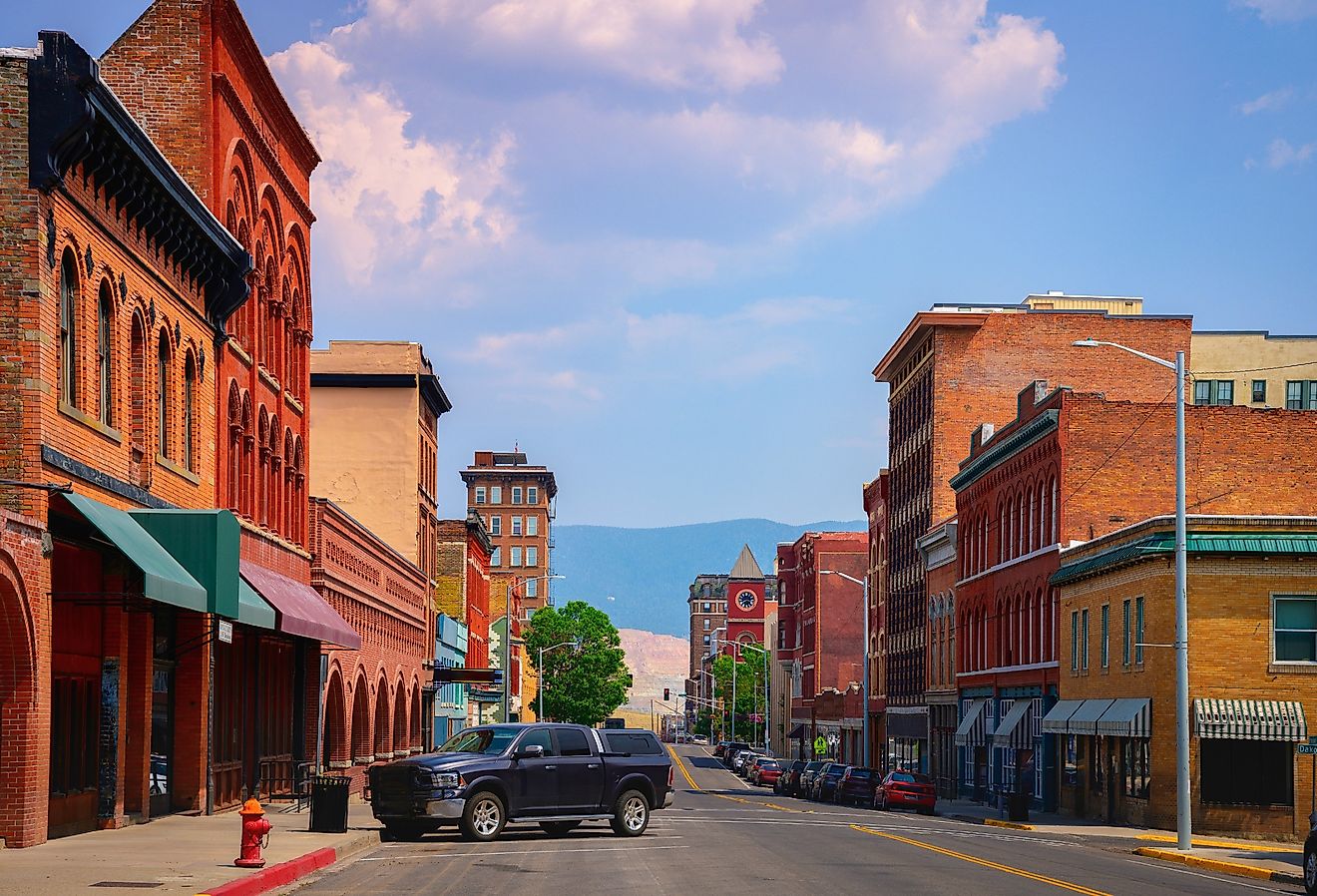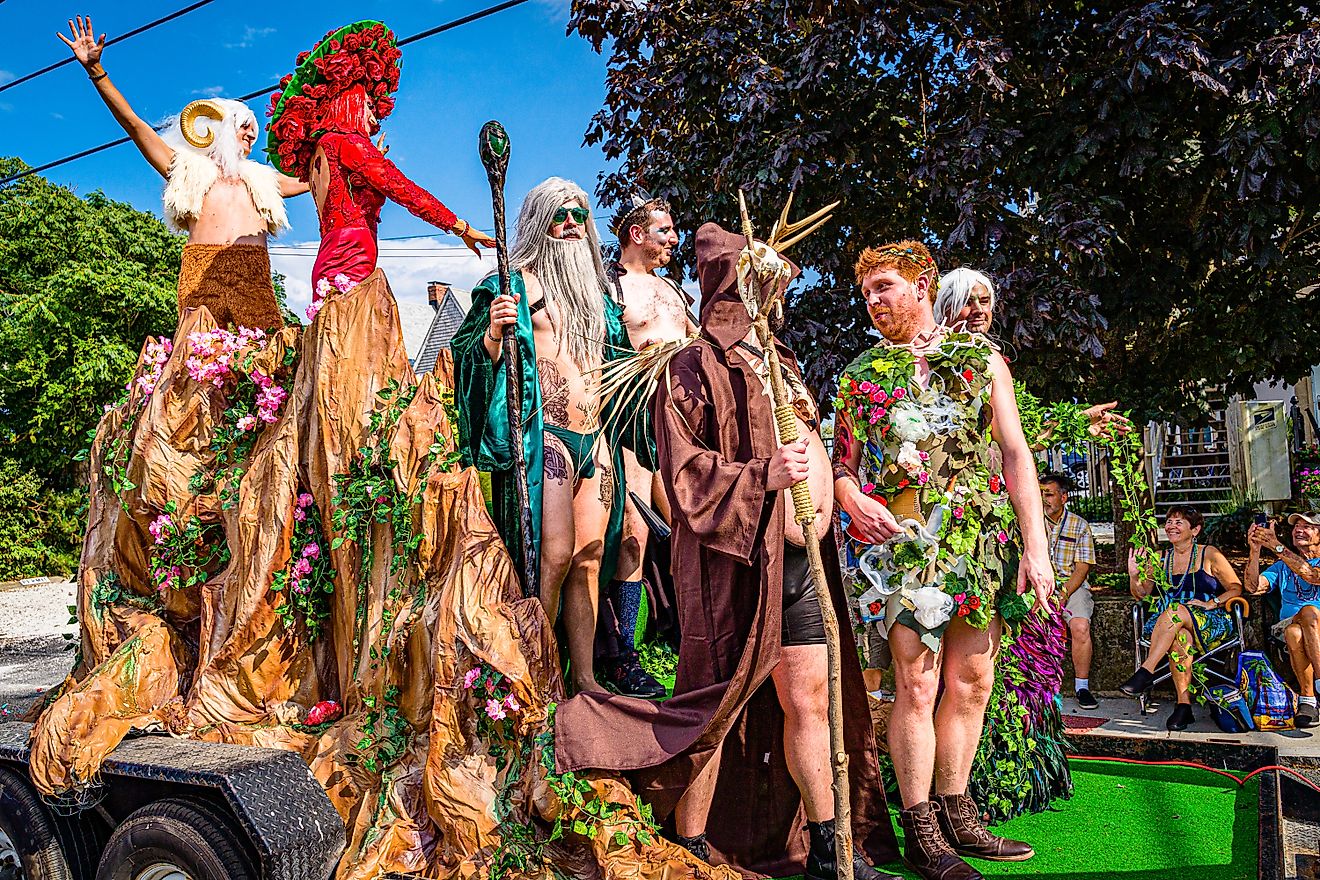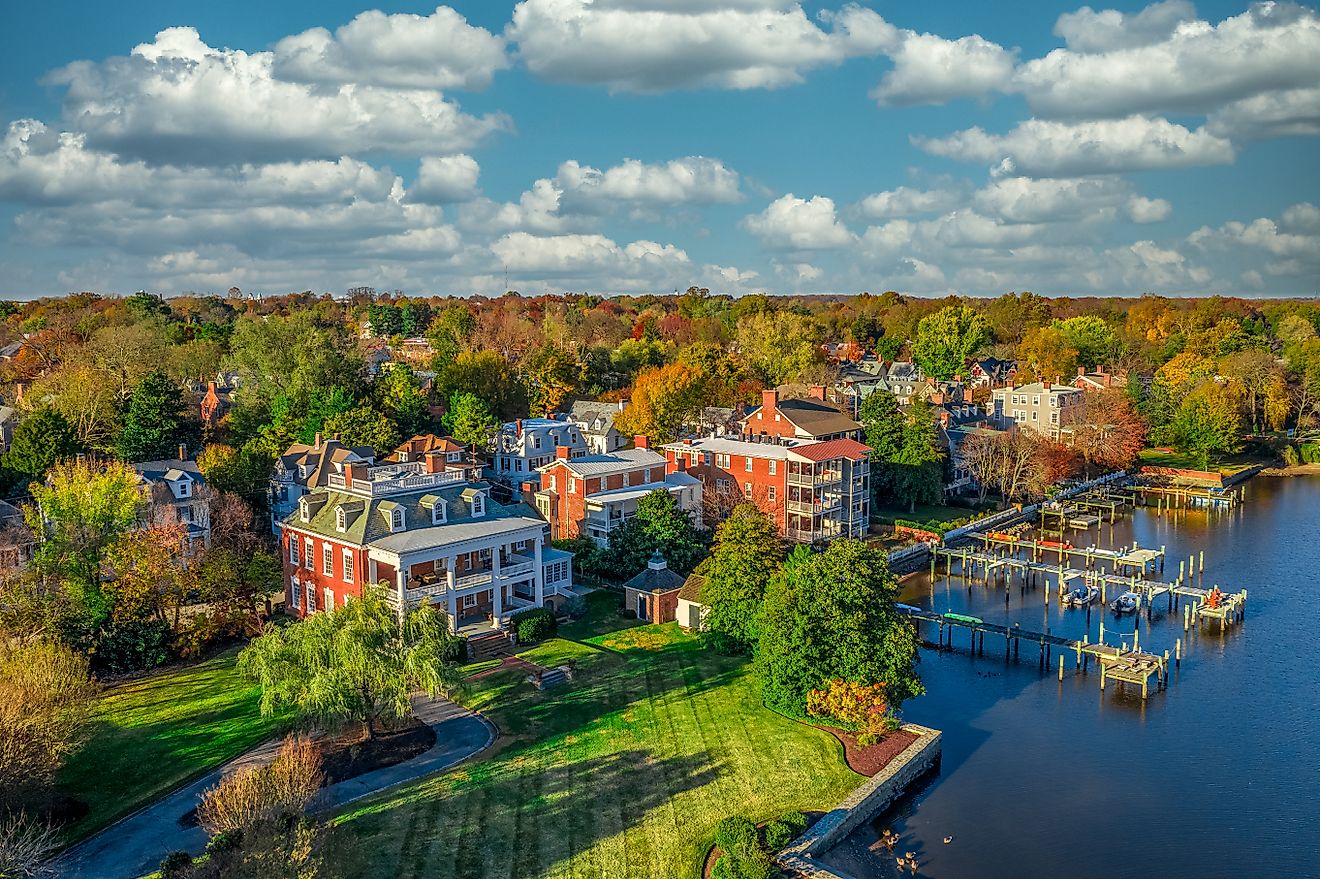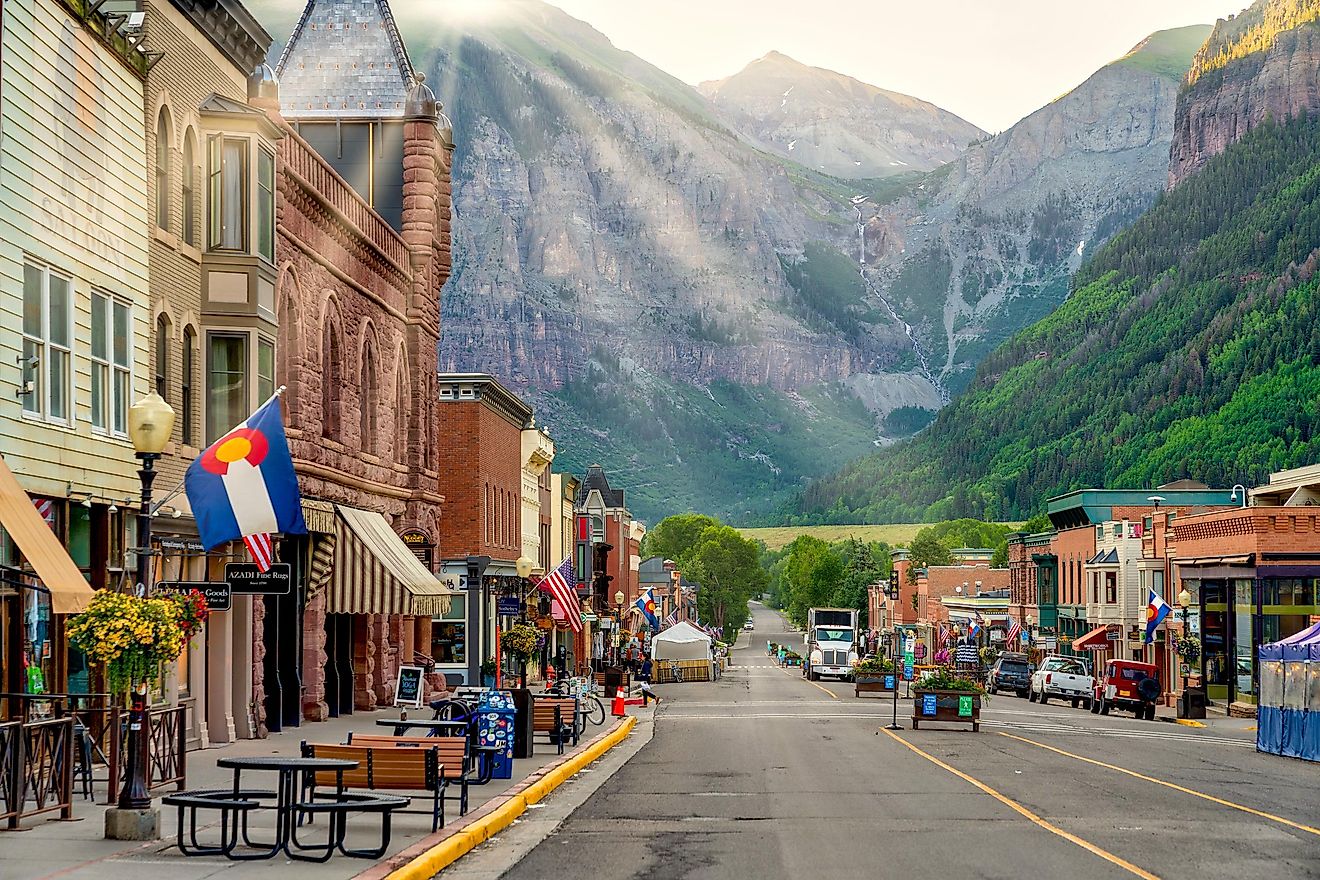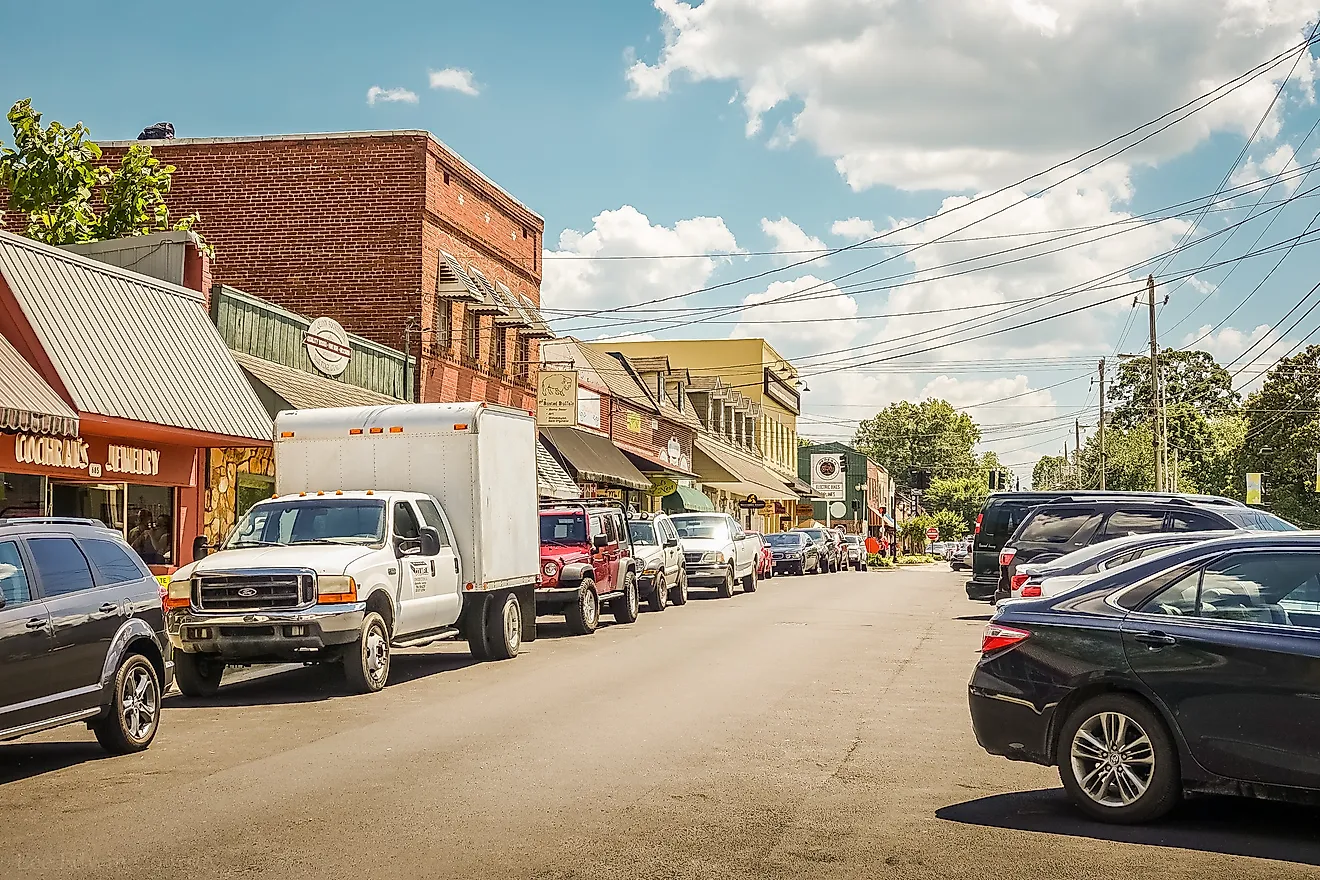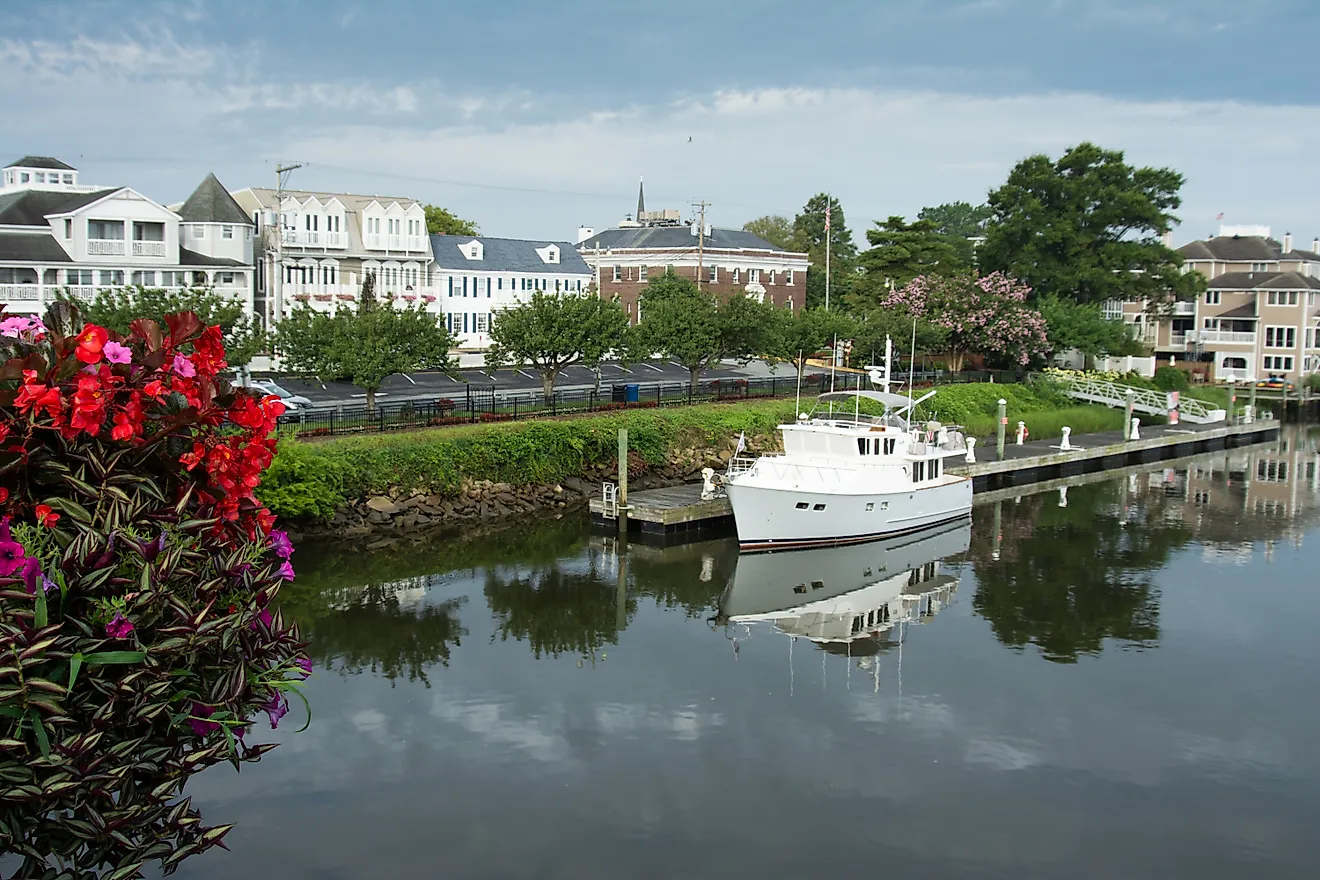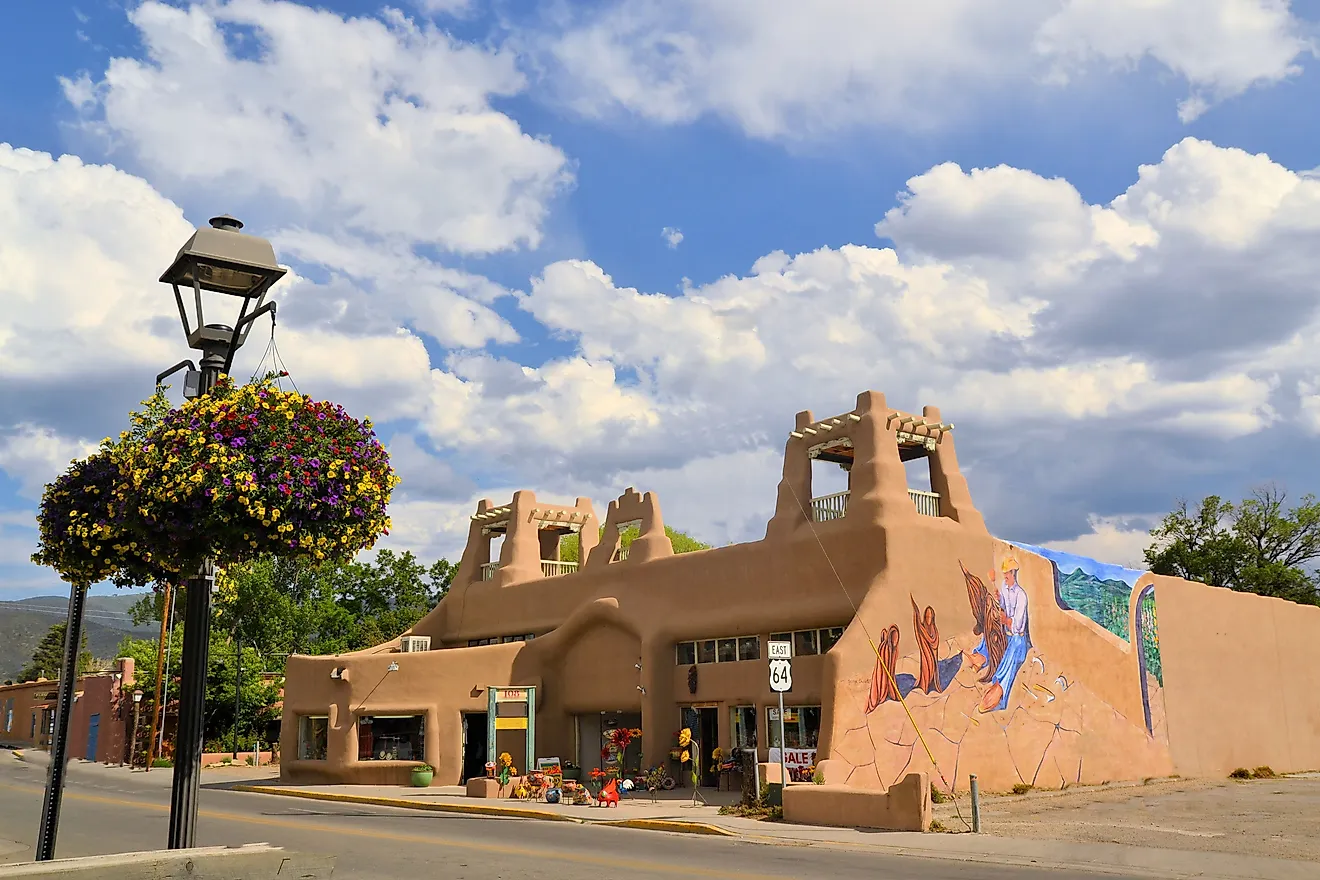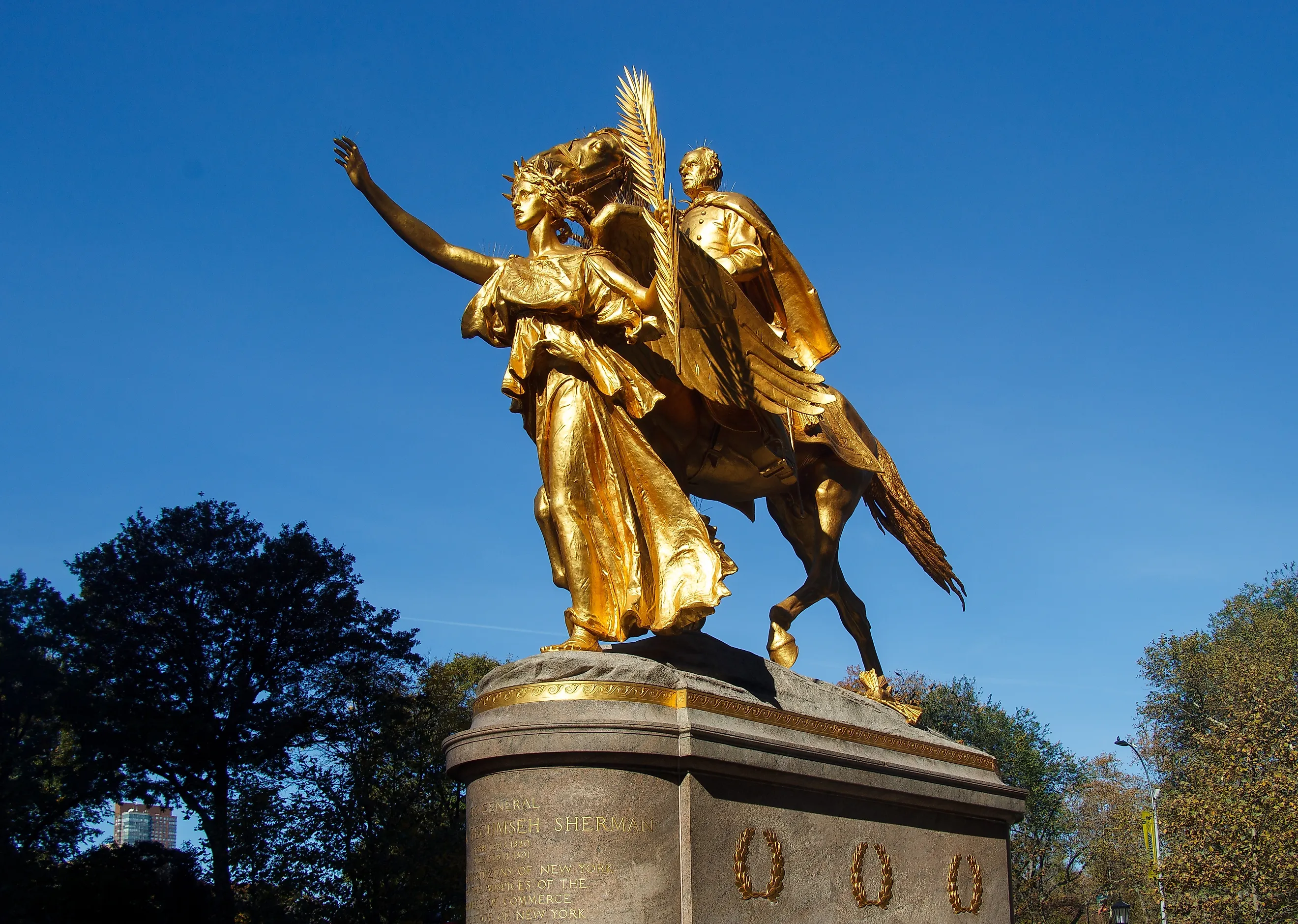
Top 7 Civil War Monuments In New York
Although no battles of the Civil War were fought in New York, the state sent more soldiers to fight in the war than any other state. It is estimated that New York contributed about 465,000 soldiers to the war effort, and more than 50,000 died in the war. After the war, New Yorkers in small towns and large cities began erecting monuments to commemorate those who served and/or died in the conflict. In many cases, it took years to raise the funds for a memorial, hire architects and sculptors, approve designs, obtain the materials needed, and complete the monument. Here are some of the most outstanding examples.
Soldiers' and Sailors' Memorial Arch (Brooklyn)
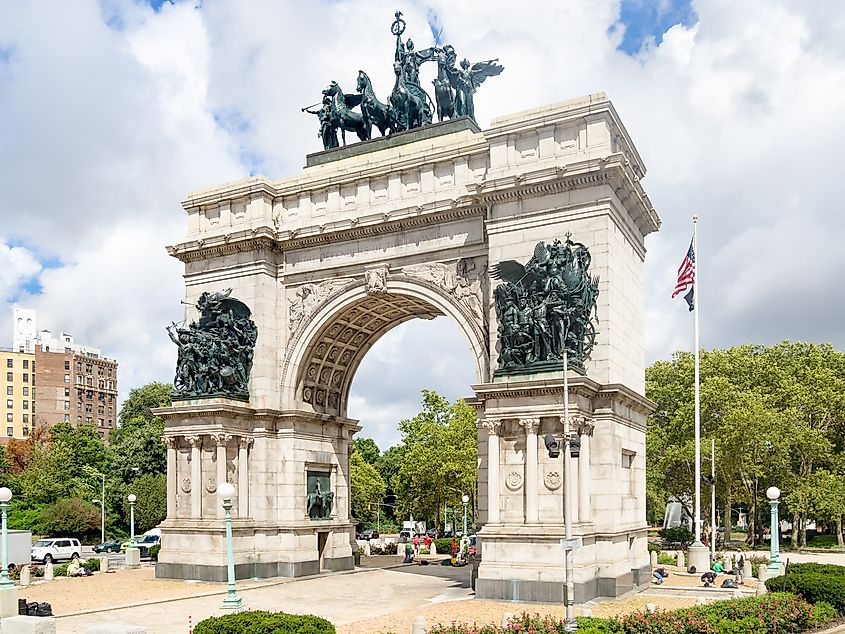
While many Civil War memorials depict an esteemed general seated on a horse, this Brooklyn memorial was deliberately designed to go in a different direction. The Soldiers' and Sailors' Memorial Arch is dedicated to all who served, but especially the rank and file soldiers, sailors, and marines. Its location in Grand Army Plaza, at the entrance to Prospect Park, also signifies a welcoming attitude to all who enter.
John Hemingway Duncan won the $1,000 prize to design the monument, and Bernard Gallagher was the contractor hired to build it. Work on the memorial arch began in 1889, and it was dedicated in 1892. The bas-reliefs on the sides were done by sculptors Thomas Eakins (the horses) and William R. O'Donovan (Lincoln and Grant figures), while Philip Martiny created ornamental sculptures on the south side panels. A major renovation involving the cleaning and repair of the arch and plaza began May 3rd, 2023, and was completed and dedicated June 5th, 2025.
Civil War Monument (Bloomfield)
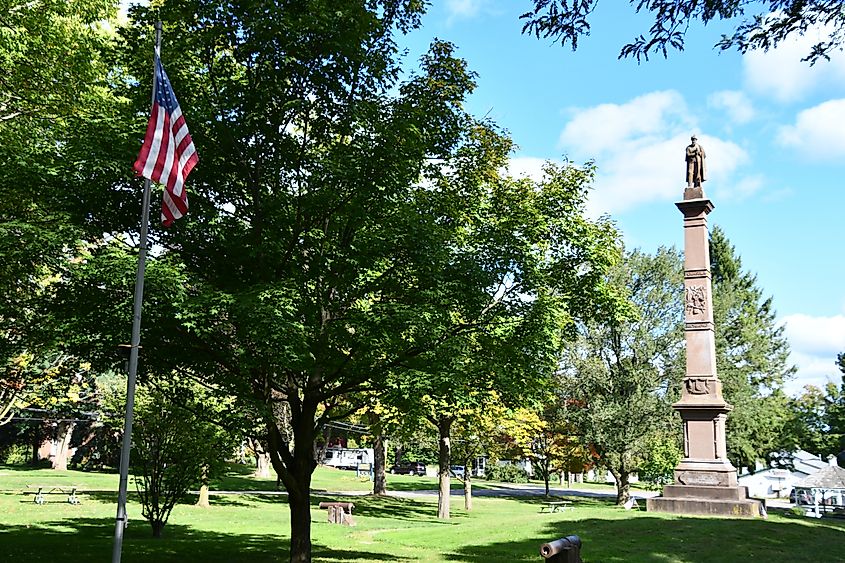
This very personal monument is a memorial to the town's 39 men who died in the Civil War. The obelisk is 45 feet tall and made of granite and limestone. Atop stands a Civil War soldier who appears to be scouting for enemy soldiers who might be marching their way. A plaque is engraved with the words: "to the memory of her sons who died in defence (sic) of the Union." Each native son's name and rank is then individually listed on one line, with details of his death in the second line.
The town's founding fathers had set aside land to be used as the town square for meeting space, worship, and other community functions. In 1847, the town decided to clear, plow, and prepare the plot, now named Elton Park. After the war, the town voted to erect a monument honoring their brave soldiers who lost their lives. J. G. Batterson, an artist and sculptor, was selected to create the monument in Elton Park. Today, it sits majestically in the park with green space all around it, a fitting reminder so that these men would not be forgotten.
Battle Monument (West Point)
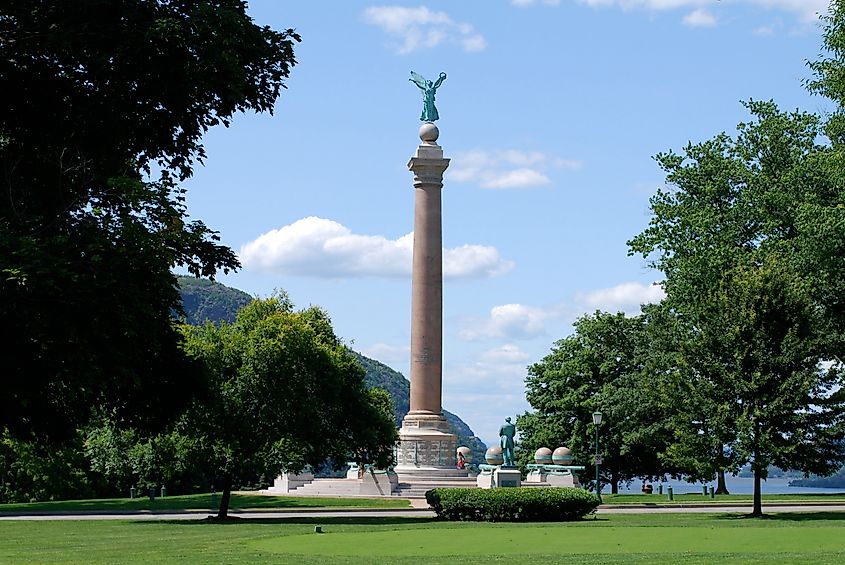
The idea of erecting a monument to West Point's Civil War honorees was suggested by Lt. Hasbrouck in 1863. Most monuments of the time honored the volunteers from a particular town who had died. These town monuments received a lot of attention and media mentions because of the tremendous fundraising efforts they required. On October 9, 1863, a meeting of West Point members decided they would fund the monument themselves, rather than ask the government to fund it. They announced amounts of $7 to $27 per officer, depending on rank, and $1 per enlisted soldier. However, several donations from groups were recorded, and private individuals outside the academy also contributed.
The architectural firm of McKim, Mead, & White was chosen in a competition for the simplicity of their design and its fit for the Trophy Square site, with credit for the design being given to Stanford White. Granite for the shaft came from a Stony Creek, CT quarry. The total cost was just shy of $70,000, and the finished Battle Monument was dedicated in May 1897, 33 years after the idea was first adopted.
William Tecumseh Sherman (Central Park)
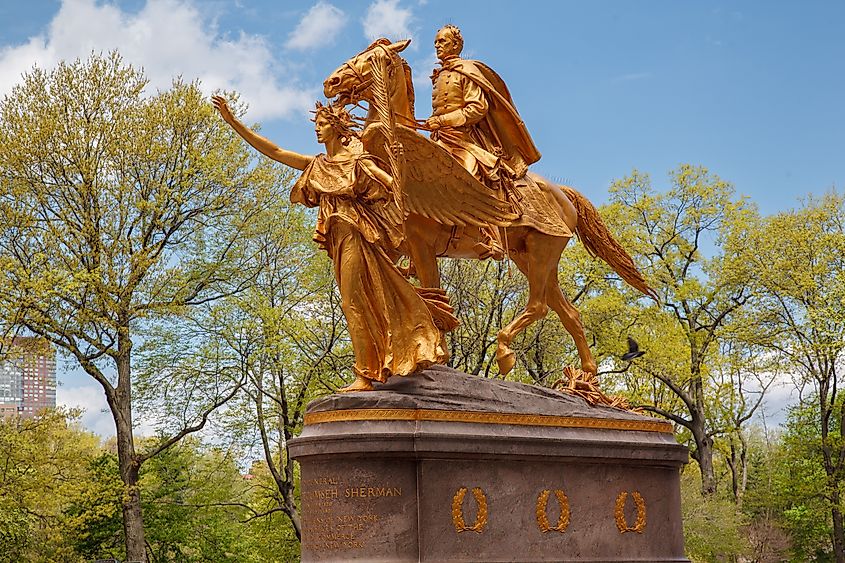
The impressive, 24-foot high monument depicts General Sherman on his horse, Ontario, led by the figure called Victory. The sculpture is full of silent imagery unique to the Civil War. Victory is a woman, created in the image of Hettie Anderson, an African-American who often modeled for painters and sculptors in the area. She is holding a palm frond as she leads Sherman and his horse, which tramples the branch of a Georgia Pine, symbolizing the Confederate South. The monument clearly shows that Sherman, a prominent Union general for the anti-slavery movement in the North, was victorious.
Augustus Saint-Gaudens was the sculptor, the same artist who created the Robert Gould Shaw and 54th Massachusetts Infantry Regiment Memorial in Boston, as well as a series of gold coins designed at the request of President Theodore Roosevelt. Born in Dublin, Ireland, he grew up in New York City. The sculptures of Sherman and Victory are gilded bronze and sit atop a pedestal made of Stony Creek granite. After considering numerous possible sites for the monument, including several in Central Park, the site that would become Grand Army Plaza was chosen, and the monument was dedicated in 1903.
General Philip Henry Sheridan Memorial (Albany)
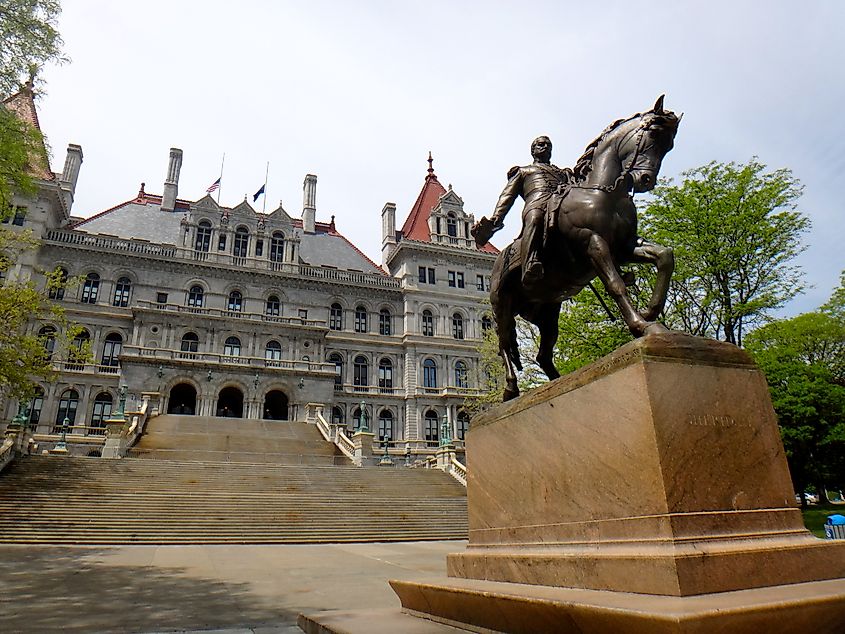
Called "Little Phil" due to his physical stature at 5'5", General Philip Sheridan was small but mighty. He was known for his aggressive military style and remembered for his victory at Cedar Creek, Virginia, as well as what is often referred to as The Burning. As Sheridan led his forces through Virginia's Shenandoah Valley, they burned barns, mills, and every other resource the Confederacy relied upon. Later, he relentlessly pursued General Lee and his forces until, by blocking their escape at Appomattox, Lee was forced to surrender.
The bronze sculpture of General Sheridan on his horse, Rienze, sits on a granite base. The granite came from the Stony Creek quarry in Connecticut, which supplied many memorials at the time. The sculpture had an unusual two-part creation. Noted sculptor John Quincy Adams Ward was commissioned to design and create the monument, but he died during the process. His protege, sculptor Daniel Chester French, suggested that Ward's plaster model of the sculpture be used to complete it, which he himself did at no charge. The monument, showing Sheridan in full army uniform astride his energetic mount, sits in front of the state capital in Albany.
Soldiers and Sailors Monument (Syracuse)
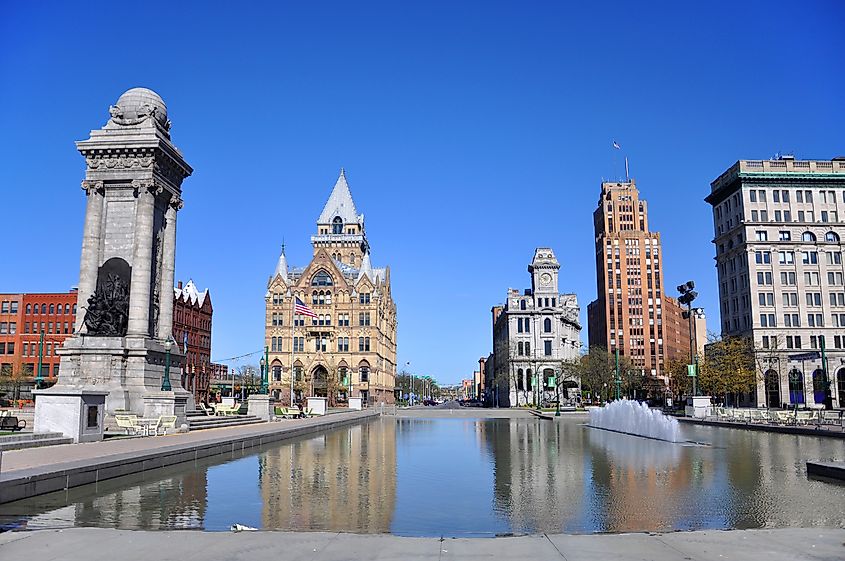
Standing 75 feet tall in Clinton Square, next to what was the Erie Canal, this Syracuse monument is a thoughtful design that includes numerous elements from the Civil War. It was built to honor Onondaga County's 12,265 men who fought in the war, and was later rededicated to honor all those who served in all wars. The monument was designed by architect Clarence Blackall, who was born in Brooklyn and designed many theaters and buildings in Boston. Sculptor Cyrus Dallin won a competition -- whose judges included architects John Quincy Adams Ward and Daniel Chester French -- to design two sculpture groups for the monument. The group of figures on the west side is called "An Incident at Gettysburg," and it depicts the moment Syracuse native, Sgt. William Lilly paused in battle and used his belt to fix a flagstaff that had broken. "The Call to Arms" on the east side shows soldiers and sailors in different uniforms heading off together, holding swords, flags, bugles, and various other objects.
The granite base sits on a stepped platform with Ionic pillars at each corner. Atop the pillars is an ornate cornice, and at the very top sits a globe of the world, which is held by four eagles carrying sashes. The base holds dedication plaques and a quote from Abraham Lincoln's Gettysburg Address. The monument was dedicated on June 21, 1910, with only "The Call to Arms" in place. "An Incident at Gettysburg" was installed a year later. In 1925, the Erie Canal was filled in and paved, and a reflecting pool was installed where the canal once flowed. Today, it is a scenic gathering spot with its fountains in warm weather and a popular ice skating rink in the winter.
Soldiers and Sailors Monument (Buffalo)
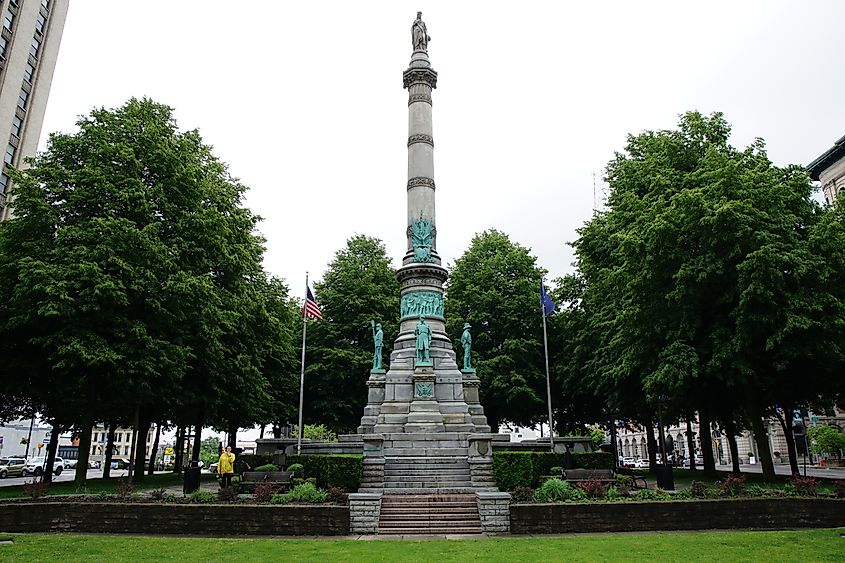
This Buffalo monument, built from 1882 to 1884, was designed by architect/engineer George Keller and sculpted by Caspar Buberl, who worked together on several other monuments. The monument is topped with a female figure representative of Buffalo, and a bronze frieze encircles the column above the heads of four 8-foot-tall bronze statues representing the army's infantry, cavalry, and artillery units, as well as the navy. The drum frieze is made up of numerous bas-relief figures that appear to be interacting with each other, including civilians depicting daily life during the Civil War and Abraham Lincoln with his cabinet members. President Lincoln's stirring words of the Gettysburg Address also encircle the column.
The monument's cornerstone was laid in 1882, and the finished piece was dedicated in 1884 with great fanfare, a parade, and speeches. By 1889, however, the monument began to tilt noticeably. City inspectors cited the cause as improper settling of the ground. The monument had to be disassembled, removed from the square, the ground leveled, and a new base constructed. At 85 feet, the newly reconstructed monument was (and still is) 15 feet taller than the original.
Only the Beginning
From Buffalo to Albany, and Syracuse to Brooklyn, visiting these examples of Civil War monuments will take you all over the state of New York. While seeing them in photographs gives you a compact view of the entire monument, nothing compares to visiting them in person. Touching the granite or stone that has been there for 200 years, armed with the knowledge you now have of how each came into existence, you can imagine the planning meetings where they were envisioned, and the fundraisers their determined citizens held year after year.
However, these monuments are only a slice of the numerous memorials to Civil War soldiers and sailors throughout the state. Many small towns have more modest monuments to remember those from their towns who gave their lives to the cause. As President Lincoln said in the Gettysburg Address, "...The world can never forget what they did here...that these dead shall not have died in vain." Lasting monuments like these make sure we never forget.
